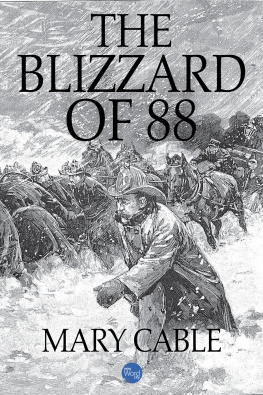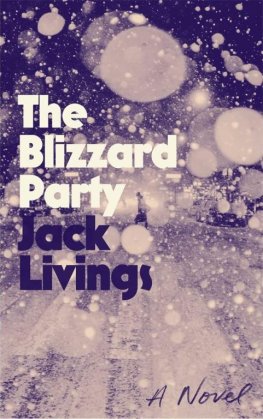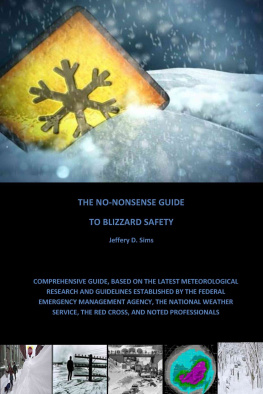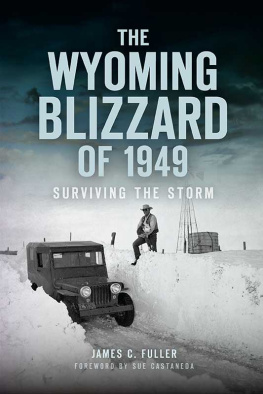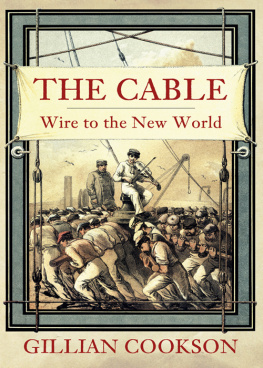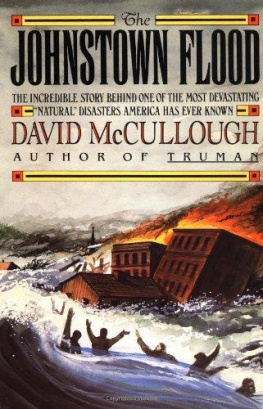On Monday, March 12, 1888, a tremendous blizzard struck the eastern seaboard of the United States, causing havoc from Maryland to Maine. Early in the storm, all seventy-four telegraph wires between Washington and Baltimore blew down, and by the end of Monday, almost every other wire in the East was down, too. The Albany Journal , addressing those few citizens who might be reading it, forlornly noted, New York is as remote from us as Tokyo.
Hundreds of trains were stalled for days, immobilized by twenty- and thirty-foot snow drifts. In the cities, public transportation ceased, businessmen could do no business, coal supplies dwindled, and babies were crying for milk. At sea, the storm was a hurricane, with winds up to ninety miles an hour. Waves three stories high pounded the rocks of New England and crashed across the beaches of Long Island, New Jersey, and Delaware. One hundred and ninety-eight ships were either sunk, damaged, or driven ashore, and nearly 100 seamen died. On land, the death toll came to more than 300, by accident, freezing, or storm-caused illness.
To rank as a true blizzard, a storm must combine heavy snowfall, bitter cold, and a fierce wind that mingles the snow in the air with the snow on the ground, whirling it around and obscuring vision. The snow is not soft and pretty but tiny and sharp, stinging and cutting as the storm continues for several days.
The Blizzard of 88 was an uncommon occurrence on the east coast. That same year, several blizzards struck the west, one in the Dakotas and others that swept through the southwestern range destroying thousands of cattle; but for easterners, their blizzard was the Blizzard of 88. And though there have been others in the East, before and since, this particular one became a folk memory, ranking with disasters like Johnstown and the Titanic. For decades, newspapers never failed to note its anniversary, and all subsequent storms were inevitably compared to it. In 1929, the Society of Blizzard Men was formed in New York, and thousands who had lived through the great storm became members so that they could attend the annual luncheon and exchange memories. The Society of Blizzard Men (later invaded by Blizzard Ladies) continued until the last few members had either died or were too feeble to attend a lunch.
One member, who had been a carpet salesman in Manhattan in 1888, pondered fifty years later the reasons for the blizzards powerful impact: The uncertainty that all felt, he wrote, the loss of life, the fear of fire, the hardships that many must suffer, no communication with the United States... the sparse news seeping through, though not knowing whether true or not, the low temperature, a terrific wind and snowdrifts and snowfall all contributed to an almost paralyzing anxiety.
In 1888, such widespread anxiety had not been experienced since the Civil War. A whole generation had grown up since then, and the cheerful, forward-looking time is called the Age of Confidence. People were anxious about their individual problems, but they felt no general, ongoing apprehension about overwhelming events beyond their control.
The 1880s had brought astonishing new inventions and discoveries that were already benefiting the rich and promising to ease and brighten life for everyone. The great eastern cities now had telephones, steam-heated buildings (a few hundred of each), and electric lights (on main streets and in wealthy households). In New York City, anyone with five cents could ride the relatively new elevated railroads, and all but the very poor enjoyed indoor plumbing. The decade had brought medical breakthroughs like antiseptic surgery, local anesthesia, and antirabies vaccine, as well as the conveniences of flatirons, fountain pens, and adding machines. Improvements to earlier technology also continued: the modern bicycle (1884), the alternating-current transformer (1885), the Kodak camera (1888), and the electric trolley (not quite ready in 1888 but on its way).
On the national scene, there seemed nothing much to worry about. The deep wounds of the Civil War were slowly healing, and no other wars appeared imminent. In the West, the last Apaches had been removed to detention camps in Florida, securing the frontier for the conquerors. The nation seemed safe, sober, and promising, at least to its ruling middle class - daring in technological advance and business, yet conservative politically and content with the conservative president, Grover Cleveland. All in all, most Americans in 1888 felt tranquil and hopeful. Their world looked fine and likely to get better. And, in the face of recent medical miracles, even death seemed to have moved back a little.
People in the eastern states were more smug and self-satisfied than the westerners and often looked down on them as rough innocents. Most arrogant of all were the New Yorkers, who saw themselves as living at the forefront of civilization. If there had been T-shirts then, they might have read: When you leave New York, you aint goin nowhere.
Then, suddenly, the Blizzard of 88 stormed in and turned that city upside down. Not that other parts of the northeast did not suffer acutely, but in smaller places and in the country, people were still living a simpler life and had time-honored ways of dealing with storms. They stayed home and turned to supplies laid in during the previous autumn; they didnt miss electricity, or running water, or telephones because they werent used to them; nor did they look to anyone but themselves and their neighbors to plow the roads. If no help appeared for days, they could wait. They were on an ancient time schedule, while New York had already anticipated the twentieth century.
And so the tale of the blizzard keeps leading back to New York City, chiefly because of the striking contrast between its seeming strength and its real fragility. Society cannot bear anarchy, Barbara Tuchman wrote in A Distant Mirror. The Blizzard of 88 swept down on a self-satisfied society and showed it what anarchy might look like.
Saturday, March 10
Saturday, March 10, 1888, was a bright springlike day in all the northeast states, with temperatures in the fifties or higher and a gentle south wind. Along Chesapeake Bay, fishing boats, especially oystermen and crabbers, were everywhere on the placid blue water. In the cities, from Baltimore to Boston, the gentle Italian love music of organ-grinders drifted incongruously above the clatter of American streets. At the offices of the Wilmington, Delaware, newspaper, Every Evening, a man named John Cooper rushed in to inform the editors that his cherry tree, as usual, was about to produce the regions first cherry blossoms. The tree grew close to Mr. Coopers chimney and, encouraged by both the sun and the hot bricks, annually outdid ordinary cherry trees.
In New York City that morning, the shopping streets of Manhattan below Twenty-Third Street were thronged with bargain hunters, eager for end-of-winter sales. On Grand Street, where the stores were big and prices were low, Ridleys, a drygoods store, was offering 1,200 drastically reduced snow shovels that the manager had no room to store over the summer.
The weather was perfect for sightseeing. Out-of-town visitors and New Yorkers alike thronged to Central Park to enjoy the zoo, or took a Fifth Avenue stage all the way up to Eighty-Second Street to have a look through the small but flourishing Metropolitan Museum of Art, and then strolled back down the avenue past the mansarded and turreted mansions of the very rich. Others rode elevated railway trains all the way down to the tip of Manhattan and then boarded ferries for Bedloes Island, where the citys latest wonder, the Statue of Liberty, had been open to the public since the previous April. Still others, following the advice of guidebooks, stopped in at 120 Broadway, the Equitable Life Assurance Building, to marvel at the view from the tower and to gawk at the operations of the New York Weather Station.

